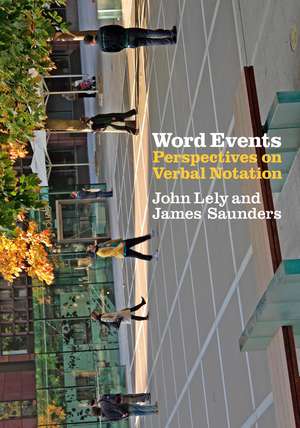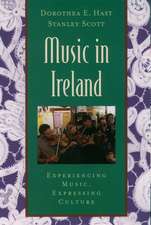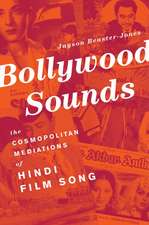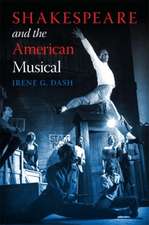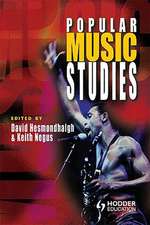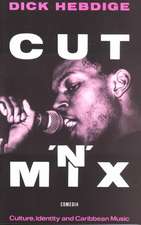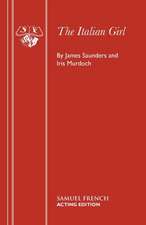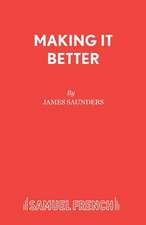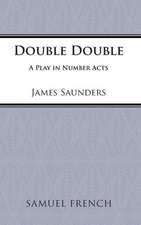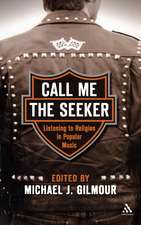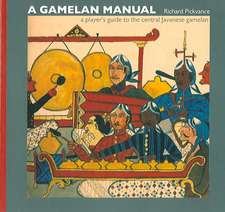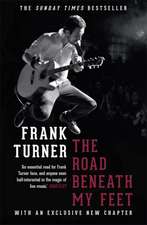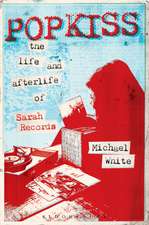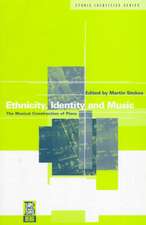Word Events: Perspectives on Verbal Notation
Autor Dr. John Lely, James Saundersen Limba Engleză Paperback – 18 iul 2012
Preț: 205.72 lei
Preț vechi: 315.48 lei
-35% Nou
Puncte Express: 309
Preț estimativ în valută:
39.36€ • 41.10$ • 32.58£
39.36€ • 41.10$ • 32.58£
Carte tipărită la comandă
Livrare economică 04-18 aprilie
Preluare comenzi: 021 569.72.76
Specificații
ISBN-13: 9781441173102
ISBN-10: 1441173102
Pagini: 488
Ilustrații: 80
Dimensiuni: 178 x 254 x 25 mm
Greutate: 0.84 kg
Ediția:New.
Editura: Bloomsbury Publishing
Colecția Continuum
Locul publicării:New York, United States
ISBN-10: 1441173102
Pagini: 488
Ilustrații: 80
Dimensiuni: 178 x 254 x 25 mm
Greutate: 0.84 kg
Ediția:New.
Editura: Bloomsbury Publishing
Colecția Continuum
Locul publicării:New York, United States
Caracteristici
Genuinely unique: an incredibly useful resource, and investigation into the practice of experimental music and sound art
Notă biografică
John Lely is a composer and performer. James Saunders is a composer, and is Head of the Centre for Musical Research at Bath Spa University, UK. He is the editor of The Ashgate Research Companion to Experimental Music.
Cuprins
List of illustrationsIntroductionAcknowledgements Part 1: GrammarOn the use of grammar in verbal notationIntroductionGrammarsContextRegisterProcessesTenseModalityMoodVoiceCircumstancesPostscript Part 2: Scores, Writings and CommentariesEric Andersen Opus 18 (1961) In Mezzo a Quattro TempiRobert AshleyThe Entrance (1965-6) Some notes on a performance of The EntranceCommentary: The EntranceG. Douglas BarrettA Few Silence (location, date, time of performance) (2008)A Text Score ManifestoCommentaryAntoine Beugerone tone. rather short. very quiet (1998)CommentaryGeorge BrechtTime-Table Music (1959) and Time-Table Event (1961)The Origin of 'Events'Commentary Gavin BryarsFar Away and Dimly Pealing (1970)On Verbal NotationCommentaryArthur Bull From 25 Scores (1994)Statement on text scoresJohn CageSolo for Voice 6 (1970)CommentaryCornelius CardewOn the Role of the Instructions in the Interpretation ofIndeterminate MusicThe Great Learning, Paragraph 6 (1968-71)CommentaryTony Conrad Selected pieces from 1961 compositions Word ScoringPhilip Corner Music notation is about specifics*; Words are generalisations.GAMELAOONY (2004)Commentary Bill DrummondSHOW (2007) MY SCORES & MEKen Friedman Zen Vaudeville (1966) Events, Scores, NotationsMalcolm Goldstein wood stone metal skin, with voice (1983)Statement on verbal notationDaniel GoodeRelaxing at the Piano (1977)Conceptual, Verbal, and Graphic ScoresLawrence HalprinA Summary of the Characteristics of Scores, from The RSVP Cycles:Creative Processes in the Human Environment (1969)Tom Johnson The Big Rumble and the Tiny Blip, from Private Pieces (1976) On Private Pieces: Piano Music for Self-EntertainmentSeth Kim-CohenForever Got Shorter (from a t-shirt of the same name) (2010) How To Write A Text About How To Write A Text Score (And Why)Some thoughts on Forever Got ShorterRealising Forever Got ShorterBengt af KlintbergFrom Twenty Five Orange Events (1963-6)Peel an orange carefully ...Alison KnowlesShoes of Your Choice (1963) CommentaryTakehisa KosugiSouth No. 3 (Malika) (1965)Commentary Joseph Kudirkasuperstition's willing victim (2007)CommentarySol LeWitt 270Wall Drawing #960 (2001)Wall DrawingsDoing Wall DrawingsAnnea LockwoodFrom the River Archive (1973)StatementAlvin LucierNotes on Verbal NotationMusic on a Long Thin Wire (1977)Realising Music on a Long Thin WireGeorge MaciunasIn Memoriam to Adriano Olivetti (1962)CommentaryBenedict Masontelling (2002)outside sight unseen and opened (2002) Kenneth Maue From 'Ideas Around the Experiences', in Water in the Lake:Real Events for the Imagination Max Neuhaus LISTEN (1966)LISTENPauline OliverosEar Piece (1998)CommentaryMichael ParsonsWalk (1969)CommentaryBen PattersonSolo for Dancer (1962) On Solo for DancerMichael PisaroOnly (2005-6)Ten Encounters (A Personal Text Score History)CommentaryErik SatiePerformance IndicationsCraig ShepardLines (1) and Lines (2) (1999)Use of text notationKunsu Shim PLACES with Airhorn (1999) Statement: Verbal NotationMieko (Chieko) ShiomiEvent scores (1963-4)Text NotationHugh Shrapnel Houdini Rite (1970)Verbal MusicHoward Skemptonfor Strings (1969)On for StringsMark So Some forgotten day (sparse winter) (2009) Text | composition - scores and structure after 4'33"Karlheinz Stockhausen RIGHT DURATIONS (1968) Commentary Jennifer Walshedirty white fields (2002) CommentaryManfred Werder20051 Text Scores - Statement (1) Statement on IndeterminacyCommentaryJohn WhiteNewspaper-Reading Machine (c. 1971)Statement on Verbal NotationCommentaryMichael Winterfor Sol LeWitt (2009) Relativity and Scalability in Respect to Sound and SilenceDaniel WolfThe Long March (2009)Notes with or without NotesChristian WolffStones (1968) On verbal notationsCommentaryAmnon WolmanFebruary 26, 2000StatementLa Monte YoungCompositions 196011 II 07 Corrected Numbering System for 1960 WorksCommentaryWhy I Withdrew from FluxusSourcesBibliography
Recenzii
"Diverse models of scoring and text-based instructions have animated experiments in music, performance, visual art, dance and poetry for over fifty years. A crucial tool in the emergence of interdisciplinary art practices, verbal notation deftly cuts across genres and categories. Short event scores, long prose pieces and enigmatic statements potentially cue actions from swinging microphones to making a salad to playing a long sustained chord. Key decisions are left to performers, and realizations may be concrete and audible or simply generate a state of awareness. It is the ultimate open form. Combining scores, statements and short critical essays, Word Events brings together classic works with more recent projects that show the continued vitality of this practice. This is a collection we have needed for a long time." - Liz Kotz, Associate Professor of Art History, UC Riverside and author of, Words to Be Looked At: Language in 1960s Art
"The 1960s and 1970s were, in the words of composer David Behrman, a time in which 'established techniques were thrown away and the nature of sound was dealt with from scratch.' The five-line staff collapsed under the weight of innovations like indeterminacy, Fluxus, live electronic music, performance art, and sound installations. The verbal score emerged as a pragmatic, egalitarian alternative. Today, with Sound Art ascendant, these scores have a newfound significance for all those concerned with performance outside the continuum of traditionally notated Western music. Sadly, the majority of these self-published documents remain exceedingly difficult to find, despite widespread webification of historical flotsam. In this volume Lely and Saunders have assembled an extraordinary collection of important scores, ranging from the exalted to the ephemeral. The inclusion of commentary by the artists themselves, as well as the first systematic analysis of the various forms of prose score, makes Word Events an invaluable resource for scholars and practicing artists alike." - Nicolas Collins, Professor, Department of Sound, The School of the Art Institute of Chicago, and Editor-in-Chief, Leonardo Music Journal
"The 1960s and 1970s were, in the words of composer David Behrman, a time in which 'established techniques were thrown away and the nature of sound was dealt with from scratch.' The five-line staff collapsed under the weight of innovations like indeterminacy, Fluxus, live electronic music, performance art, and sound installations. The verbal score emerged as a pragmatic, egalitarian alternative. Today, with Sound Art ascendant, these scores have a newfound significance for all those concerned with performance outside the continuum of traditionally notated Western music. Sadly, the majority of these self-published documents remain exceedingly difficult to find, despite widespread webification of historical flotsam. In this volume Lely and Saunders have assembled an extraordinary collection of important scores, ranging from the exalted to the ephemeral. The inclusion of commentary by the artists themselves, as well as the first systematic analysis of the various forms of prose score, makes Word Events an invaluable resource for scholars and practicing artists alike." - Nicolas Collins, Professor, Department of Sound, The School of the Art Institute of Chicago, and Editor-in-Chief, Leonardo Music Journal
